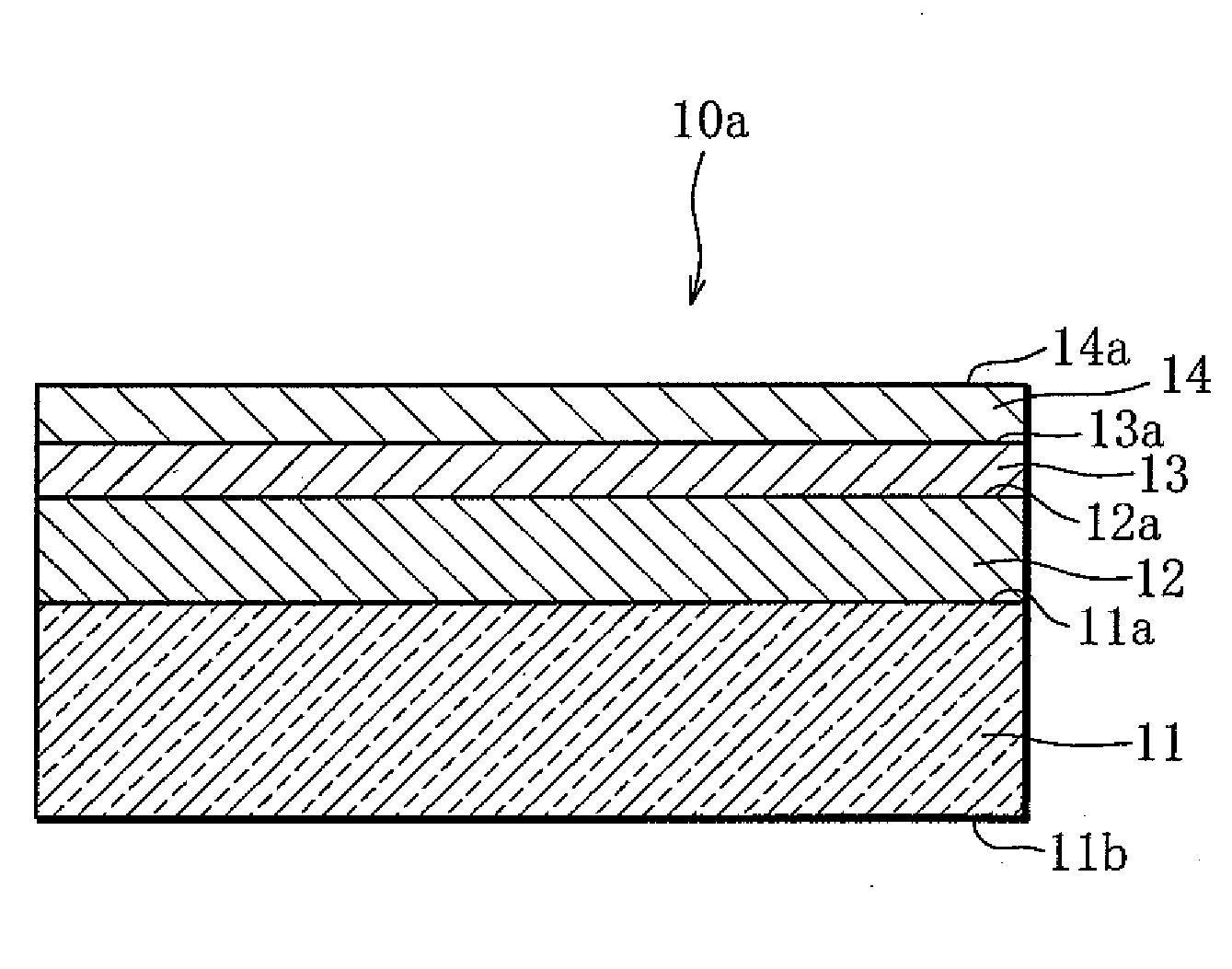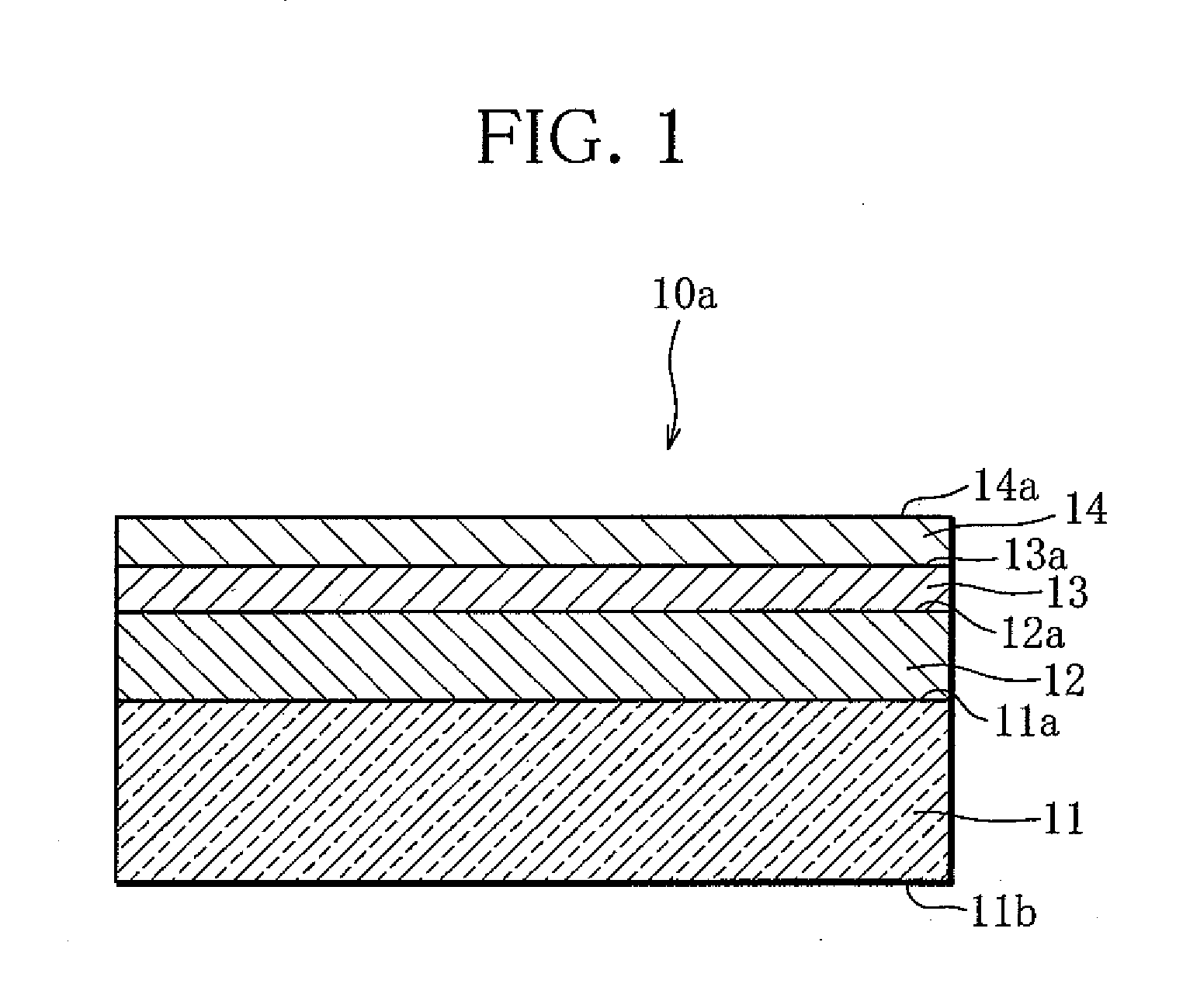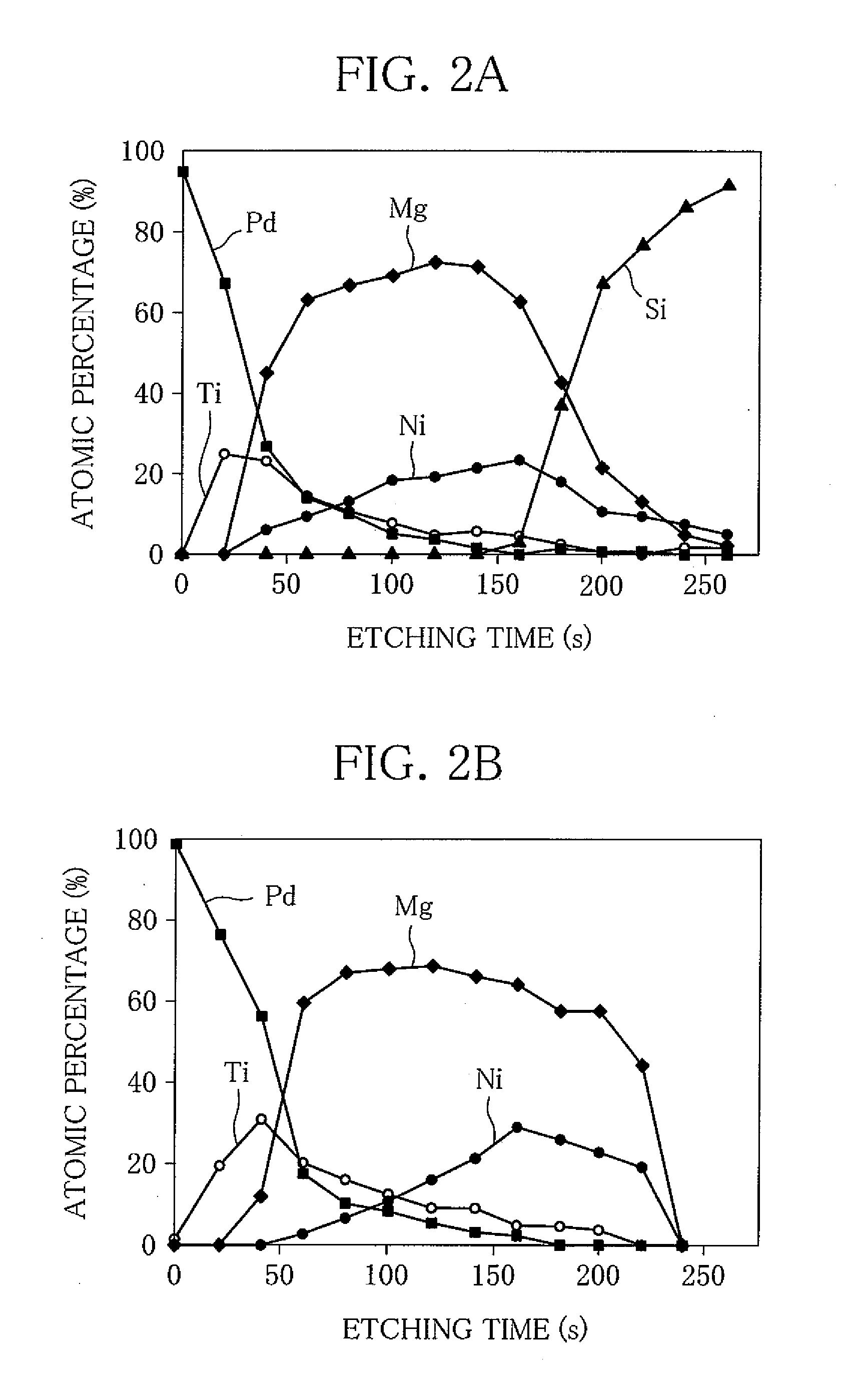Hydrogen Sensor
a technology of hydrogen sensor and sensor, applied in the field of hydrogen sensor, can solve the problems of small change in reflectance, explosion risk, and complicated structur
- Summary
- Abstract
- Description
- Claims
- Application Information
AI Technical Summary
Benefits of technology
Problems solved by technology
Method used
Image
Examples
first embodiment
[0034]First, referring to FIGS. 1 to 4B, a hydrogen sensor according to the present invention will be described in details.
[0035]The hydrogen sensor 10a shown in FIG. 1 includes a substrate 11 of glass. On the surface 11a of the substrate 11, a thin film layer 12 of elemental composition MgNix (0≦x12a of the thin film layer 12, a buffer layer 13 of titanium (Ti) is formed. Further, on the surface 13a of the buffer layer 13, a catalyst layer 14 of palladium (Pd) is formed. Here, the thickness of the thin film layer 12 is 40 nm, the thickness of the buffer layer 13 is 2 nm, and the thickness of the catalyst layer 14 is 4 nm.
[0036]The buffer layer 13 less than 1 nm in thickness results in a reduction in the amount of titanium (Ti) or the like diffusing from the buffer layer 13 into the catalyst layer 14, and therefore difficulty in preventing the oxidation of the catalyst layer 14. The buffer layer 13 more than 5 nm in thickness, on the other hand, makes it difficult for a constituent ...
second embodiment
[0056]Next, referring to FIG. 6, a hydrogen sensor which is a variation of the second embodiment will be described in detail, where constructional elements similar in function to those of the preceding embodiments will be assigned the same reference marks, while the description of those constructional elements will be omitted.
[0057]The hydrogen sensor 10c shown in FIG. 6 is formed by further interposing a second thin film activation layer 15s between the buffer layer 13 and the thin film layer 12 in the structure of the hydrogen sensor 10a according to the first embodiment. The second thin film activation layer 15s is formed to contain palladium (Pd). In the hydrogen sensor 10c, palladium (Pd) diffuses from the second thin film activation layer 15s into the thin film layer 12 and promotes hydrogenation dehydrogenation of the thin film layer 12. Thus, in the hydrogen sensor 10c, while the buffer layer 13 prevents the oxidation of the catalyst layer 14 and the thin film layer 12, and ...
PUM
| Property | Measurement | Unit |
|---|---|---|
| thickness | aaaaa | aaaaa |
| operating temperature | aaaaa | aaaaa |
| depth | aaaaa | aaaaa |
Abstract
Description
Claims
Application Information
 Login to View More
Login to View More - R&D
- Intellectual Property
- Life Sciences
- Materials
- Tech Scout
- Unparalleled Data Quality
- Higher Quality Content
- 60% Fewer Hallucinations
Browse by: Latest US Patents, China's latest patents, Technical Efficacy Thesaurus, Application Domain, Technology Topic, Popular Technical Reports.
© 2025 PatSnap. All rights reserved.Legal|Privacy policy|Modern Slavery Act Transparency Statement|Sitemap|About US| Contact US: help@patsnap.com



